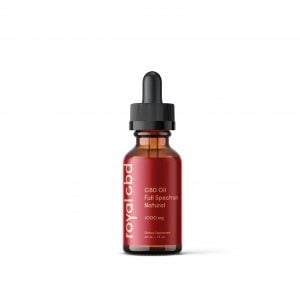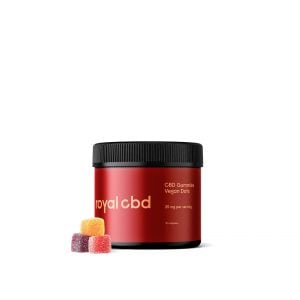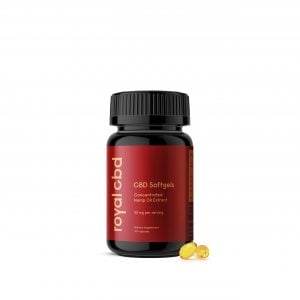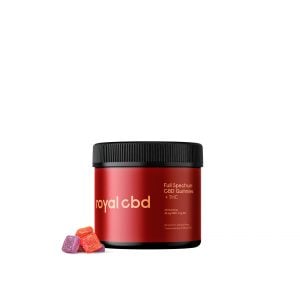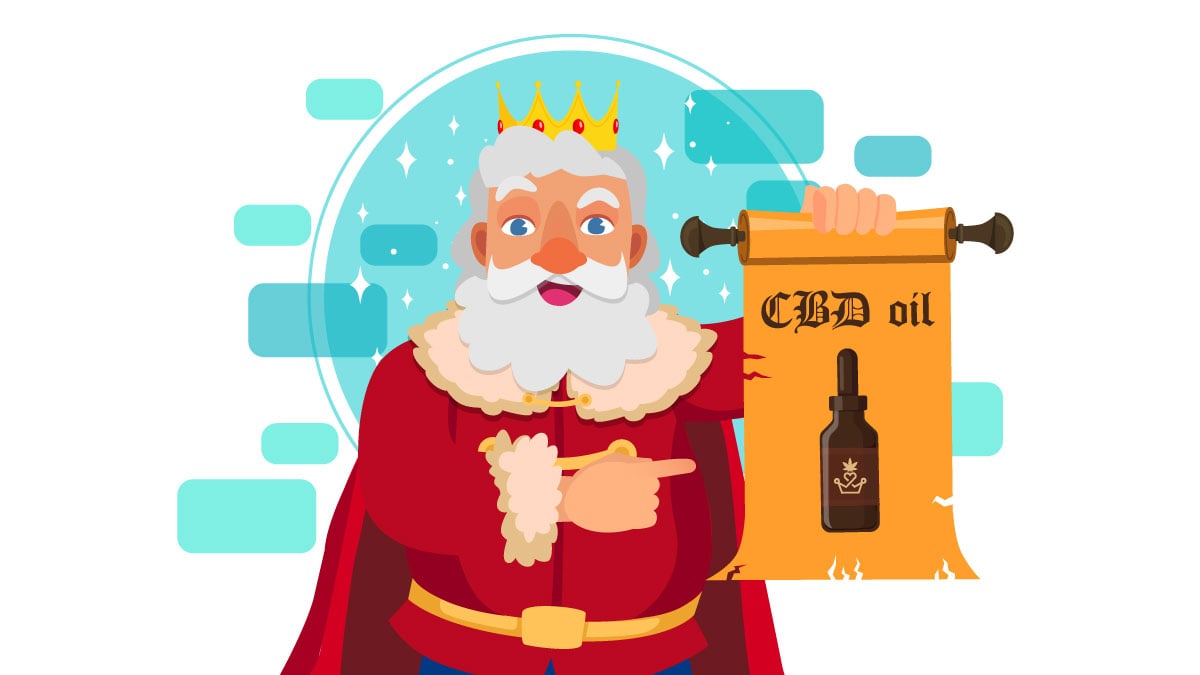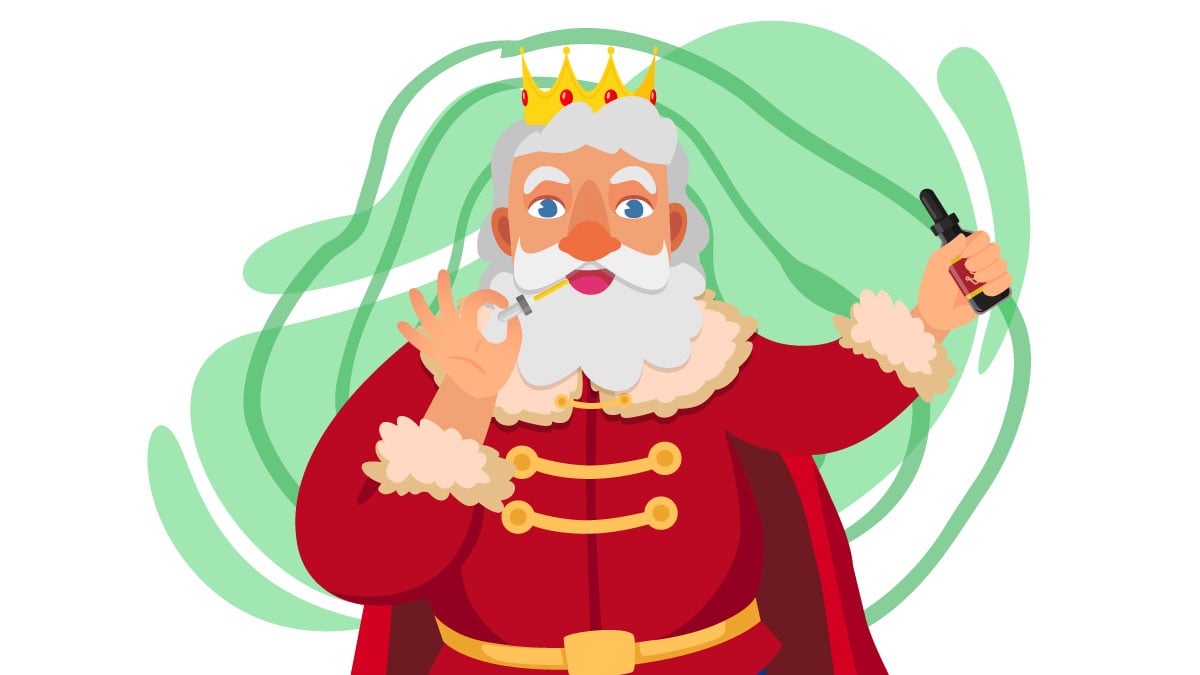More people than ever before are shifting their opinions about cannabis. All thanks to a simple cannabinoid known as CBD.
CBD oil was a game-changer for the legalization movement, and something anybody interested in marijuana should know about.
It’s something that’s been on everyone’s tongues lately, from A-list celebrities to health-conscious consumers.
Here, we provide you with a comprehensive resource so that you can quickly become an expert on how CBD oil works, and how to use it to your advantage.
Whether you’ve never tried CBD, tried it once or twice, or are a regular consumer, our CBD oil guide has the information you need to sound like an expert.
Let’s begin, shall we?
CBD Oil Guide: The Essentials
CBD, short for cannabidiol, is a completely non-psychoactive, naturally occurring compound in the cannabis plant. Its popularity has been rising steadily in recent years for it claimed benefits.
CBD oil is extracted from hemp or marijuana plants. Both belong to the cannabis family (Cannabaceae).
It plays a large role in the regulation of the endocannabinoid system, the system in your body that uses cannabinoids produced by the body itself (such as anandamide).
The well-deserved popularity of CBD has given rise to an abundance of CBD goods available on the market.
This is because CBD oil is easy to use and has a high “bioavailability”.
Having a high bioavailability means it can enter the body efficiently, allowing smaller doses to remain effective.
Because CBD comes from both hemp and marijuana, it’s obvious that you may have some concerns about using CBD oil.
Don’t worry, we explain everything below. Before we head over to the meat of the article, it’s time for a short history lesson.
The History of CBD Oil
Cannabis is one of the earliest – if not the earliest – agricultural crops.
The first records of cannabis use date back 10,000 years.
Since then, the cannabis plant has been grown for food and textiles in many different cultures.
Traditionally, people used hemp fibers for making ropes and fabrics, the seeds for nutrition, and the flowers and resin for medicine.
Cannabis was a well-respected medicine among some of the greatest civilizations of the past.
As humans began to understand that different varieties of cannabis serve different purposes, they started cultivating both hemp and marijuana.
Hemp plants tend to grow tall, thin, and ‘fluffy’. Marijuana plants are short, bulky, and full of resinous aromatic flowers.
In 2737 BC, the Chinese emperor Shen-Nung used hemp oil topically for rashes and irritated skin.
When hemp arrived in Europe, it was used to make clothes, ropes, and even building materials.
Queen Victoria’s doctor, J.R. Reynolds, prescribed her a CBD-rich strain of marijuana to make her menstrual cramps more manageable.
At the beginning of the 20th century, particularly in the United States, marijuana plants were bred to contain rich concentrations of THC to make them more potent and psychoactive.
This thriving cannabis culture all came crashing down in the 1930’s with the start of the marijuana prohibition.
In the 1980’s, following the War on Drugs, President Reagan’s administration invested millions of dollars in studies that were aimed to prove that marijuana caused brain damage and cognitive impairment.
Not only did those studies fail to achieve the prejudiced politicians’ goals, it also led to the discovery of the endocannabinoid system in humans.
Today, researchers are rubbing their hands together to go all-in with the studies on CBD, THC, and other cannabinoids. They want to understand how it works, and what its limitations are.
There’s big money in that…
The CBD market alone is estimated to hit $2.1 billion by 2020 with $450 million of that generated by the hemp industry alone.
CBD Oil and the Endocannabinoid System
Although research on the endocannabinoid system (ECS) is still in its infancy, we’ve made huge progress in our understanding of CBD and the ECS. While we won’t bore you with the details, these advancements have allowed for increased adoption and the subsequent rise of the CBD market.
Learn More: How Does CBD Actually Work?
At this point, you’re probably wondering how to distinguish CBD oil from other products. So, let me put an end to your confusion.
What Does CBD Oil Look Like?
CBD oil typically comes in the form of a liquid tincture.
They’re designed for sublingual (under the tongue) consumption, or orally by swallowing the liquid.
It’s made by mixing the CBD extract with a food-grade oil such as MCT oil.
A carrier oil like MCT oil is required because CBD is fat-soluble. This means that it dissolves in fat instead of water, and allows the body to store it in fat tissues.
Consuming CBD along with fat increases the bioavailability of CBD oil.
Using CBD Oil
CBD tinctures are extremely easy to use.
All you have to do is place a few drops under your tongue, wait 30-60 seconds, and swallow– simple as that.
Additionally, you can add the drops to juice or tea and drink as normal.
The effects should be noticeable within several minutes after ingestion.
Learn More: Ways to Mask the Taste of CBD Oil
Determining High-Quality From Poor Quality CBD
It’s important to know how to tell the difference between high-quality CBD oil and poor-quality CBD oil.
A decent CBD oil usually comes in an amber-gold or pale-yellow color for CBD distillate and dark brown color for whole hemp extract, with clear consistency and free of any plant material.
Whenever you come across a CBD product that falls short of these requirements, its an instant red flag.
CBD Oil Extraction: How It’s Done
The process behind extracting CBD oil from the plant is a lot like other plant extractions.
As mentioned, CBD can be extracted from both marijuana and hemp varieties of cannabis plants. Many companies source their Cannabidiol from industrial hemp plants to avoid legal issues from using THC-rich marijuana strains.
We can distinguish two common methods of CBD oil extraction:
1. Alcohol Extraction
Anything that’s soluble in fat is also soluble in alcohol. This means that we can efficiently pull CBD and cannabis terpenes out of the plant using simple drinking alcohol (ethyl alcohol).
This is a useful method of extracting CBD but is considered lower quality to supercritical CO2 extraction.
2. Supercritical CO2 extraction
Most self-respecting companies utilize supercritical CO2 extraction to produce CBD oil.
CO2 extraction involves filtering the gas through a number of temperature-controlled chambers under high pressure to create a special supercritical phase. While in this phase, CO2 behaves like both a gas AND a liquid. It also gives it extremely efficient solvent properties that essentially strip the chemicals out of the cannabis material.
Once the extraction is over, chemists use a special method called chromatography to get rid of any plant residue from the final products.
Sometimes, manufacturers will also extract terpenes and other chemical compounds to make “full-spectrum” CBD oil.
The Difference Between Hemp and Marijuana CBD Oil
A CBD oil guide wouldn’t be complete without highlighting the differences between hemp and marijuana CBD Oil
After all, one of the most popular questions among beginners is whether the source of Cannabidiol makes a difference when it comes to its effect.
The short answer is “No.”
If you’re looking for a longer, more specific answer, we need to dig deeper into the cannabinoid and terpene content of marijuana- and hemp-derived CBD oil.
Hemp-derived CBD
Hemp is grown specifically to be rich in CBD and contains only trace amounts of THC (usually below 0.2 or 0.3%). Since cannabidiol is non-psychoactive, hemp-derived CBD allows you to experience an array of benefits offered by cannabis without making you feel high.
Marijuana-derived CBD
In most countries, marijuana is still illegal. The possession, cultivation, and distribution of marijuana can still get you prosecuted in some parts of the world like The Philippines or Malaysia.
Currently, you can buy marijuana-derived CBD oil in 9 US states for recreational use and in 31 states for medical use.
Some varieties of marijuana are specifically bred to elevate CBD content. We often measure the ratio between THC and CBD to give an idea of its effects and best uses. You can find marijuana strains with a 2:1 or even 1:1 THC to CBD ratio.
To cut the long story short, CBD is the same no matter the source. The effects of CBD oil, which depend on the whole cannabinoid content, can vary between hemp and marijuana-derived CBD – and so does the law.
What’s more crucial, is to select a product that’s sourced from pesticide-free plants because the harmful pesticide residues can make their way into the final product.
When choosing CBD oil, also make sure your supplier provides third-party lab test results with each batch of its products.
CBD Oil Guide: Dosage Instructions
If you’re looking for raw numbers, you’ve come to the wrong place.
Why?
Because there is no optimal CBD dosage that would suit everyone. CBD affects everyone differently.
For now, let’s focus on figuring out the potency of your CBD oil.
CBD tinctures usually come with a dropper. One full dropper contains around 1 mL of oil, which equals 20 drops. I recommend you count the first on, however, as they can vary between manufacturers slightly.
So, for example, if you have a 250 mg tincture in a 30mL (1 ounce) bottle, we calculate that 1 mL will contain about 8 mg CBD.
An ounce (30mL) of a 500 mg bottle, in turn, has approximately 16.6 mg of CBD per 1 mL, and a 1000 mg tincture comes with somewhere around 33 mg of CBD in 1 mL.
Based on these facts, you can estimate the amount of CBD by using the number of drops and CBD per mL.
Why Does CBD Affect Everyone Differently?
CBD dosage is going to be different between individuals. This has to do with several factors that impact the way CBD affects your body, including:
- Genetic Predispositions
- Gender
- Biochemistry
- Overall Health
- Tolerance
- Metabolism
Full-Spectrum CBD Oil vs. CBD Isolate: Which One Should I Choose?
When scrolling through a selection of CBD goods online, you may notice that some products are labeled as “99% pure CBD” or “CBD Isolate”. Others are listed as “full-spectrum CBD extract”.
What’s the difference?
Let’s take a closer look at the key differences between these products and which one will work better for you.
1. Full-Spectrum CBD Oil
Simply put, full-spectrum CBD oil is the same concentrations of cannabinoids found in the original plant.
There are over 113 other cannabinoids in hemp and marijuana, plus the trichomes and buds on the cannabis flowers contain a range of terpenes, flavonoids, vitamins, and minerals.
Here’s a list of additional compounds available in full-spectrum CBD extracts:
- Omega-3 fatty acids
- Vitamins E, A, and C,
- Zinc and phosphorus
- Iron and calcium
- Magnesium and potassium
Studies have found that full-spectrum CBD oil is more effective than CBD isolate, which scientists described as “the entourage effect” [6].
The concept of the entourage effect is based on the theory that the cannabinoids, terpenes, and other compounds of the source plant can amplify each other’s effects.
2. CBD Isolate
A CBD isolate is 99% pure CBD, with no other cannabinoids, no terpenes, flavonoids, and extra compounds – just Cannabidiol.
Since CBD isolate is missing so many desirable ingredients, you may be thinking “it must be inferior to full-spectrum CBD extracts”.
In many cases, you would be correct, however, there are many people out there who actually prefer CBD isolates over full-spectrum extracts.
Here are 4 reasons why people may prefer a CBD isolate:
- Isolates contain higher amounts of CBD per dose
- A CBD isolate is completely THC-free (full-spectrum extracts contain < .03%)
- You can precisely control the concentration of CBD in isolates
- They are taste and odor-free; you can add CBD isolate to an edible product and use the benefits of Cannabidiol without feeling the distinct earthy taste of CBD oil.
Where to Buy CBD Oil
There are three places where you can find CBD oil for sale.
1. Online
You can buy CBD oil online, which we strongly recommend.
Buying online is easy, safe, and convenient; all it takes is a few clicks of a mouse and your products will be shipped to you within 1-3 business days on average.
Besides, it’s easier to make a background check on your potential CBD oil supplier so that you can verify if the company can be trusted or not.
Those who need CBD oil in bulk can count on decent wholesale deals, too.
2. Local Dispensaries
If buying CBD online is not an option, you can try to get your bottle of CBD oil locally. CBD products are sold in dispensaries, which are government-regulated retail stores.
Dispensaries allow users to buy CBD in person. If your state’s legislature doesn’t allow cannabis for recreational use, you’re going to need a medical cannabis card or, at least, a doctor’s recommendation.
3. Head Shops
For hemp-derived CBD goods, you can visit one of your local head shops or specialty retail stores like apothecaries or wellness centers. Similar to dispensaries, these types of stores provide CBD users with a wide range of hemp products and accessories.
One major drawback to be aware of when buying from head shops is that they aren’t regulated. This means the owner can actually sell anything he/she considers “high-quality”, even if it’s not.
As a result, there are many stores that sell oils and other supplements which contain no CBD at all, just to take advantage of the rapidly growing market.
Bottom Line
CBD oil is a versatile supplement that many people are incorporating into their lifestyle to enhance the quality of their lives.
CBD (and cannabis in general) have a long record of historical use, tracing back thousands of years.
It’s important to keep in mind CBD is not an officially approved drug; it’s classified as a dietary supplement. Therefore, if you suffer from a chronic health condition or are taking medications, discuss your intentions with a medical professional before adding CBD oil to your diet. CBD may interact with your medications.
If you’ve benefited from CBD by any means, we encourage you to share your story in the comment section below.
Let’s raise awareness about Cannabidiol and what it can do for people!
